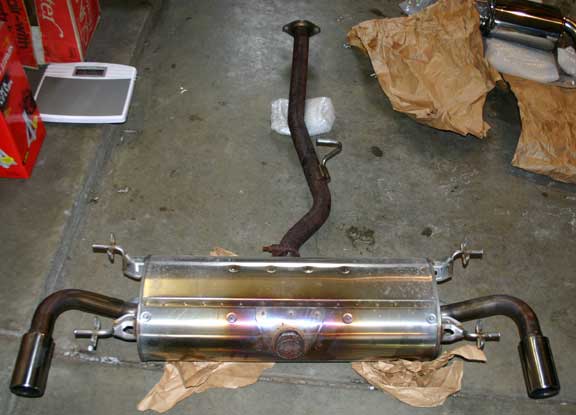 |  |
| Stock | Racing Beat |
 |  |
| Stock | Racing Beat |

Trickiest part is getting the exhaust finishers off the car. There are two screws at the bottom plus too many tabs. I used a flat-blade screwdriver to help each tab free from under the car while pulling on the exhaust finisher from the rear.

One freed exhaust finisher. I only damaged one tabs on the passenger-side finisher when removing. If you do significant damage to yours, it may be time to think about the chromed-plastic exhaust finishers available from the Mazda accessories catalog.

Stock exhaust in all of its glory. This one is about 1 year old with about 8500 miles on it. It was driven almost entirely in Georgia with no road salt or other corrosives to battle, and the mild steel still looks terrible.

The Racing Beat model comes in two pieces. The rear half...

and the front half, which are bolted together under the car.

This is the flange that attaches to the catalytic converter/midpipe. Note the small diameter quickly necking up to the larger diameter.


Comparison between the stock and Racing Beat tips. Can you tell which is which? The Racing Beat is clearly larger at about 3.5" ID compared to the stock at 2.5" ID.

Shot of the connection between the front and rear halves of the Racing Beat exhaust. Note that I was in the process of putting the MazdaSpeed suspension on the rear at the same time, so I had much-improved access for both projects.
